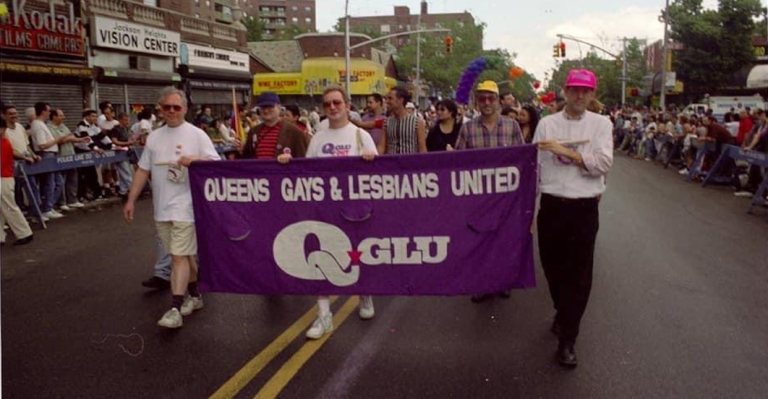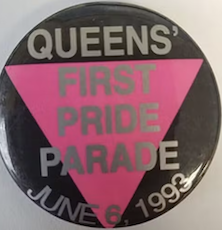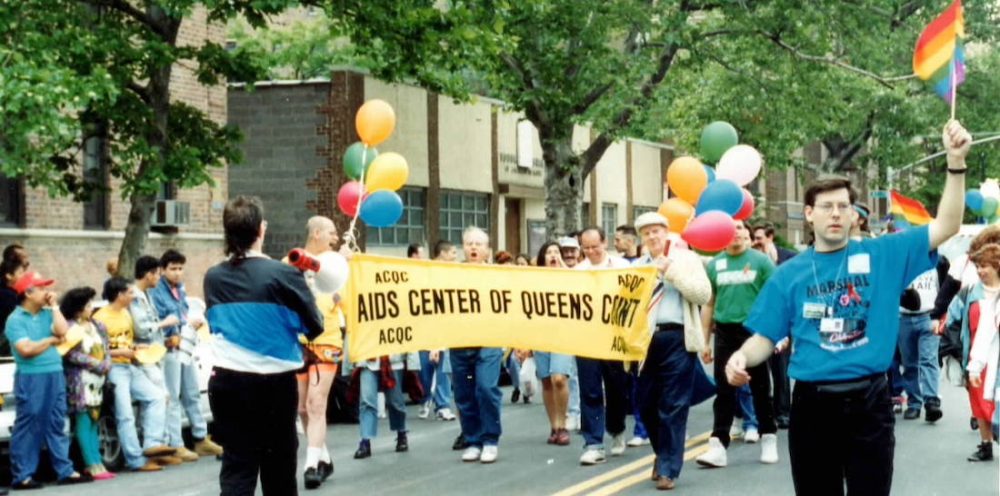
On June 6, 1993, thousands gathered in Jackson Heights for the first Queens Pride Parade, forging a new legacy of visibility and hope.
New York, N.Y. — The inaugural Queens Pride Parade and Multicultural Festival on June 6, 1993, was more than a march—it was a declaration.
For decades, Jackson Heights had quietly harbored a large LGBTQ+ population, many of whom lived double lives, open in Manhattan but closeted at home. The murder of Julio Rivera, a 29-year-old bartender, in July 1990, shattered that silence. Rivera’s death, the first anti-gay hate crime to be tried in New York State, became a rallying point for activists and neighbors alike.
A Lavender Line Drawn: The Birth of Queens Pride
The parade’s roots also trace to the 1992 controversy over the Children of the Rainbow curriculum, which sought to teach tolerance in New York City schools. The backlash in Community School District 24—where many LGBTQ educators and students lived—exposed deep-seated prejudice.

In response, public school teacher Daniel Dromm came out and, with Cuban-born activist Maritza Martinez, co-founded the Queens Lesbian and Gay Pride Committee (Q-GLU). Their vision: a family-friendly, multicultural event that would make LGBTQ people visible as neighbors, friends, and family.
Marching for Visibility: The Day It All Began
On that Sunday in June, an estimated 10,000 people lined 37th Avenue, which was marked with a bold lavender line—a nod to the color’s historic association with gay liberation.
The parade route stretched from 89th to 75th Streets, passing the very corner where Rivera was murdered, now known as Julio Rivera Corner. There, marchers paused for a moment of silence, honoring Rivera and all victims of anti-LGBTQ violence.
The parade was led by the Sirens Motorcycle Club and featured a diverse array of groups: Q-GLU, Las Buenas Amigas, South Asian Lesbian and Gay Association (SALGA), Asian and Pacific Islander Coalition, Latino Gay Men of New York, COLEGA, Men of All Colors Together, PFLAG, the New York Area Bisexual Network, and the Metropolitan Gender Network.
Drag queens, transgender performers, and beloved local icon Ms. Colombia brought color and joy to the festivities, while also having played key roles in organizing and fundraising.
Grand Marshals and Community Voices

The first grand marshals were trailblazers: Tom Duane, the first openly gay member of the New York City Council; Deborah Glick, the first openly lesbian member of the New York State Legislature; and Jeanne Manford, co-founder of PFLAG. Their presence underscored the parade’s message: LGBTQ+ people belong everywhere, including the halls of power.
Maritza Martinez delivered a bilingual speech, urging, “We know that many gay and lesbian Latinos live here in Queens. This is the moment, with this parade, to come out of the closet and demonstrate that we are Latinos and gays!” The multicultural festival on 37th Road echoed this spirit, with performances and food reflecting the borough’s diversity.
A New Tradition, A Lasting Legacy

For many, marching in Queens was both exhilarating and nerve-wracking.
As Irish immigrant Brendan Fay reflected, “Gays and lesbians should be able to feel comfortable in all parts of the city, not just in Manhattan. I lived a secret life in Queens, but was open and gay in Manhattan. There are so many gays and lesbians who feel they have to be invisible when they return to these boroughs.”
The success of the first parade inspired similar events in Brooklyn and the Bronx, making Queens Pride the second oldest and second largest pride march in New York City. Today, the parade draws tens of thousands, but its heart remains the same: a celebration of visibility, resilience, and community.
The Lavender Line Continues
The lavender line painted down 37th Avenue has become a symbol of both remembrance and progress. Each year, the parade pauses at Julio Rivera Corner for a moment of silence, ensuring that the struggle and sacrifice that made this celebration possible are never forgotten.
The legacy of the first Queens Pride Parade is not just in its size or longevity, but in the lives it changed. As Daniel Dromm later said, “I wanted people to know that lesbians and gay men were their family, friends, and neighbors.” In 1993, Queens made that truth visible to the world.

75-Word Audio Summary
On June 6, 1993, the first Queens Pride Parade transformed Jackson Heights into a beacon of LGBTQ visibility and hope. Sparked by tragedy and controversy, thousands marched along a lavender line, honoring victims like Julio Rivera and celebrating the borough’s diversity. Led by pioneering activists and community groups, the parade marked a turning point for acceptance in Queens and inspired similar movements citywide. Its legacy endures as a testament to courage, resilience, and the power of coming together.